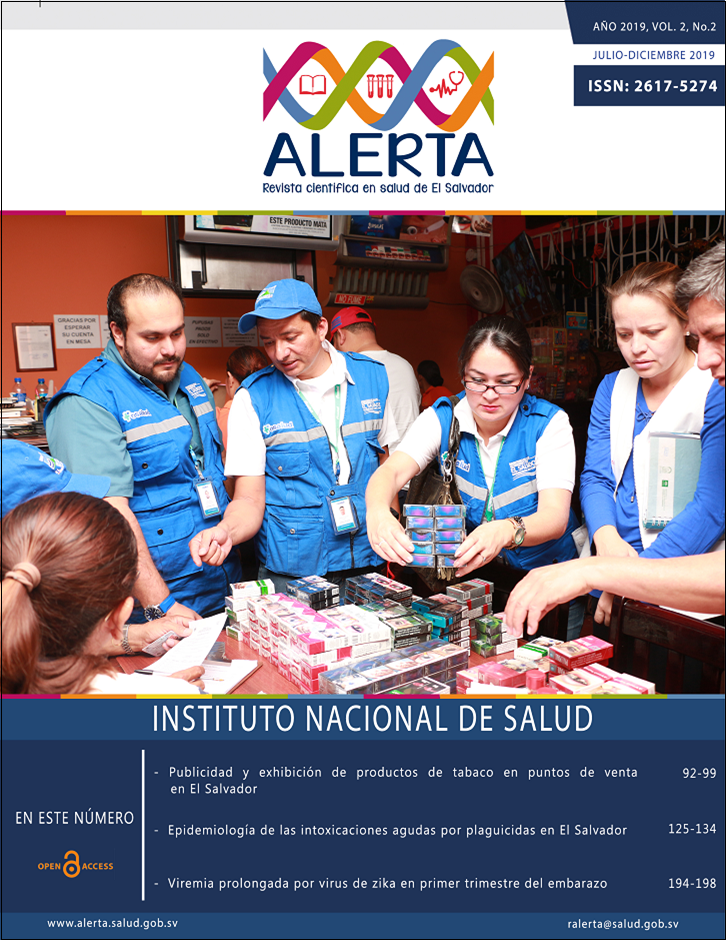Bacterial flora in hospitals of the Salvadoran Social Security Institute 2010-2017
DOI:
https://doi.org/10.5377/alerta.v2i2.7941Keywords:
bacterial flora, hospital infectionsAbstract
Objective. To determine which are the bacteria most frequently isolated in the cultures of greater demand in general hospitalization of the Salvadoran Social Security Institute facilities (ISSS) between 2010 and 2017. Methodology. Quantitative, retrospective study on bacterial isolates of greater hospital cultures demand, contents in the ISSS bacteriology archives.
Results. 79 693 culture reports generated between 2010 and 2017 in the 10 ISSS hospitals were reviewed, 58.5% (46 681 cultures) were suitable for analysis, mainly 39.9% urine, 17.5% blood, 15.5% abscess, lower respiratory tract 8.4% and surgical wound infections 2.7%. In 54.8%, enterobacteria, coagulasepositive staphylococci in 20.0%, and non-fermenting Gram-negative bacilliin 14.2% were the most common finding, according to nosological entity Staphylococcus aureus (SAU) predominated in bacteremias, abscesses, diabetic foot infections and catheter related infections, Klebsiella pneumoniae (KPN) in lower airway, Pseudomona aeruginosa (PAE) in pressure ulcers, Streptococcus agalactiae (SGA) in female reproductive infection and for the rest Escherichia coli (ECO) prevailed.
Conclusion. The proportion of positivity obtained in cultures in hospitalization wards was around 60%, the main demand was for urinary infections, septicemias or bacteremia and abscesses evaluation, Gramnegative enterobacteria, mainly Escherichia coli and Klebsiella pneumoniae and coagulase positive cocci, mainly Staphylococcus aureus and epidermidis and non-fermenters like Pseudomona aeruginosa were the most common findings.
Downloads
843
Downloads
Published
How to Cite
Issue
Section
License
Copyright (c) 2019 Víctor David Franco Escobar

This work is licensed under a Creative Commons Attribution 4.0 International License.
Privacy statement:
Alerta articles are published under license Creative Commons 4.0 CC BY: https://creativecommons.org/licenses/by/4.0/
Authorship rights
Revista Alerta gives the authors exclusive control of their work and the right to be acknowledged and cited.





